
Water cycle vector illustration. Labeled earth hydrologic process explanation diagram
Evaporation. Water from the earth's surface or water bodies like oceans, seas, lakes, ponds, and rivers evaporates and becomes water vapour in the water cycle. The evaporation process is driven by the heat of the sun. The main factor that affects evaporation includes humidity, wind speed, temperature and solar radiation.
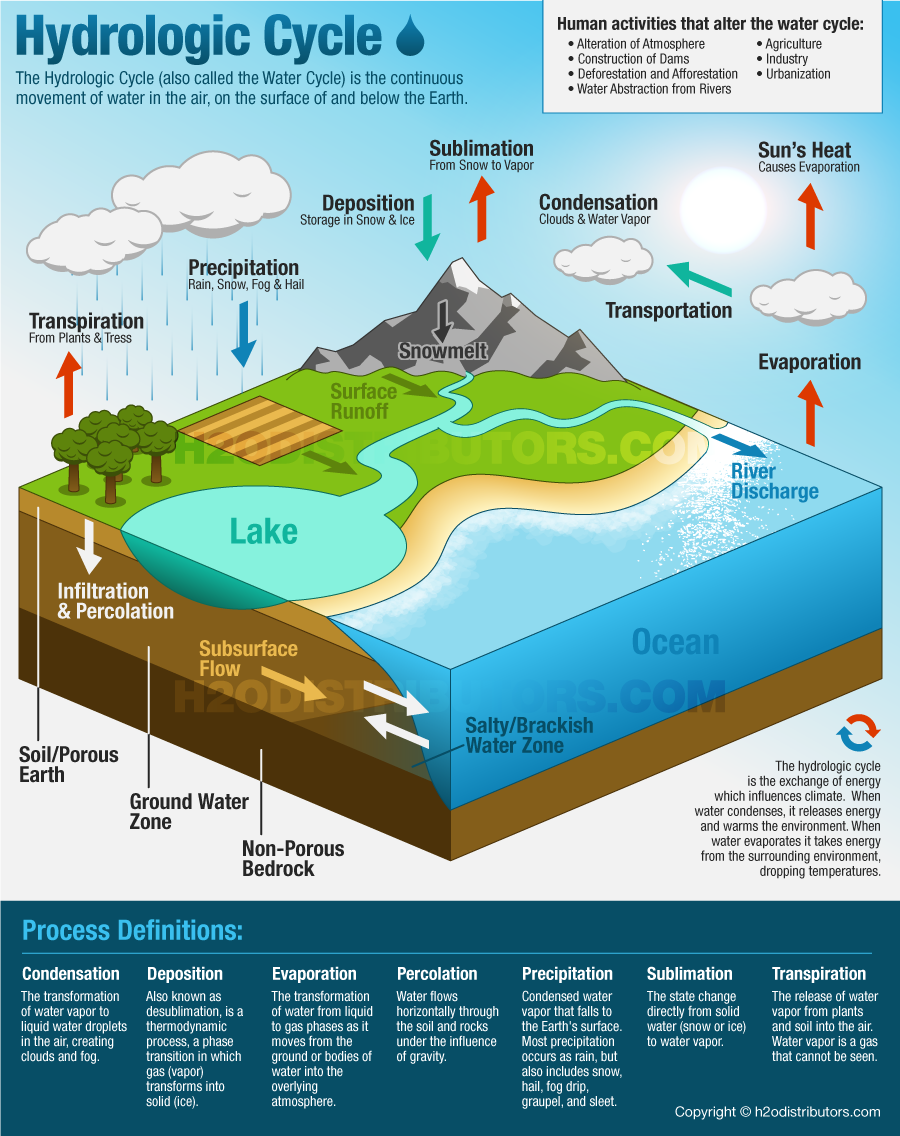
Hydrological cycle GEO CAR. /SOCIAL STUDIES
The sun is the real boss of the water cycle, and it doesn't even live here on Earth. The sun is what makes the water cycle work. The sun provides what almost everything on Earth needs to go—energy, or heat. The sun's heat allows liquid water to evaporate into water vapor, which in the main way water gets from the land surface back into the sky.
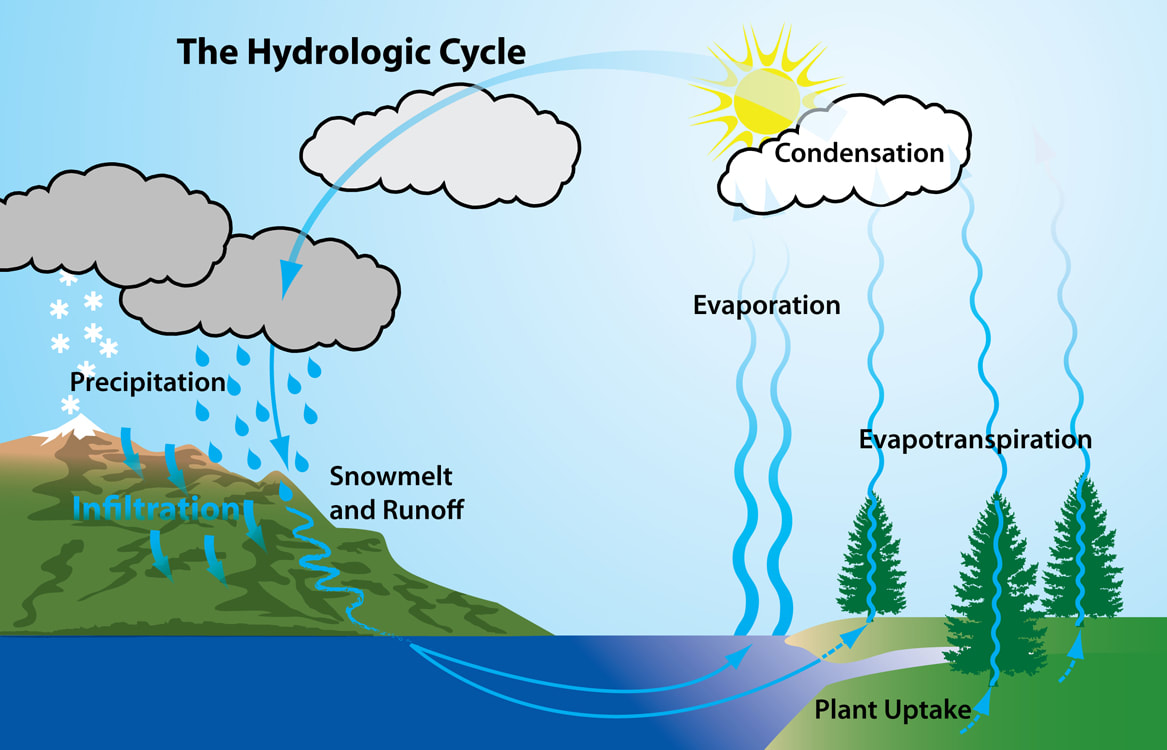
The hydrological Cycle notesychs
1. Evaporation of Water The water of the reservoirs like oceans, seas, lakes, etc gets evaporated. Most importantly, it is the first step of the process. The water from the source gets absorbed by the heat energy of the sun. The evaporation helps in maintaining the temperature of the bodies. 2.Condensation It is the second step of the process.
FileSimple Water Cycle.JPG Wikimedia Commons
The Water Cycle. Our newest diagram, released in 2022, depicts the global water cycle, as well as how human water use affects where water is stored, how it moves, and how clean it is. The diagram is available as a downloadable product in English, Spanish, and Simplified Chinese. (Check back in the future as additional translated versions become.

Water cycle Class 9 Chapter 14 Natural Resources
The runoff and streamflow steps of the water cycle play an important part in making sure water gets back into the oceans to keep the water cycle going. Below is a simple water cycle drawing will help you understand the different phases of the hydrologic cycle diagram and its explanation. (Image to be added soon)
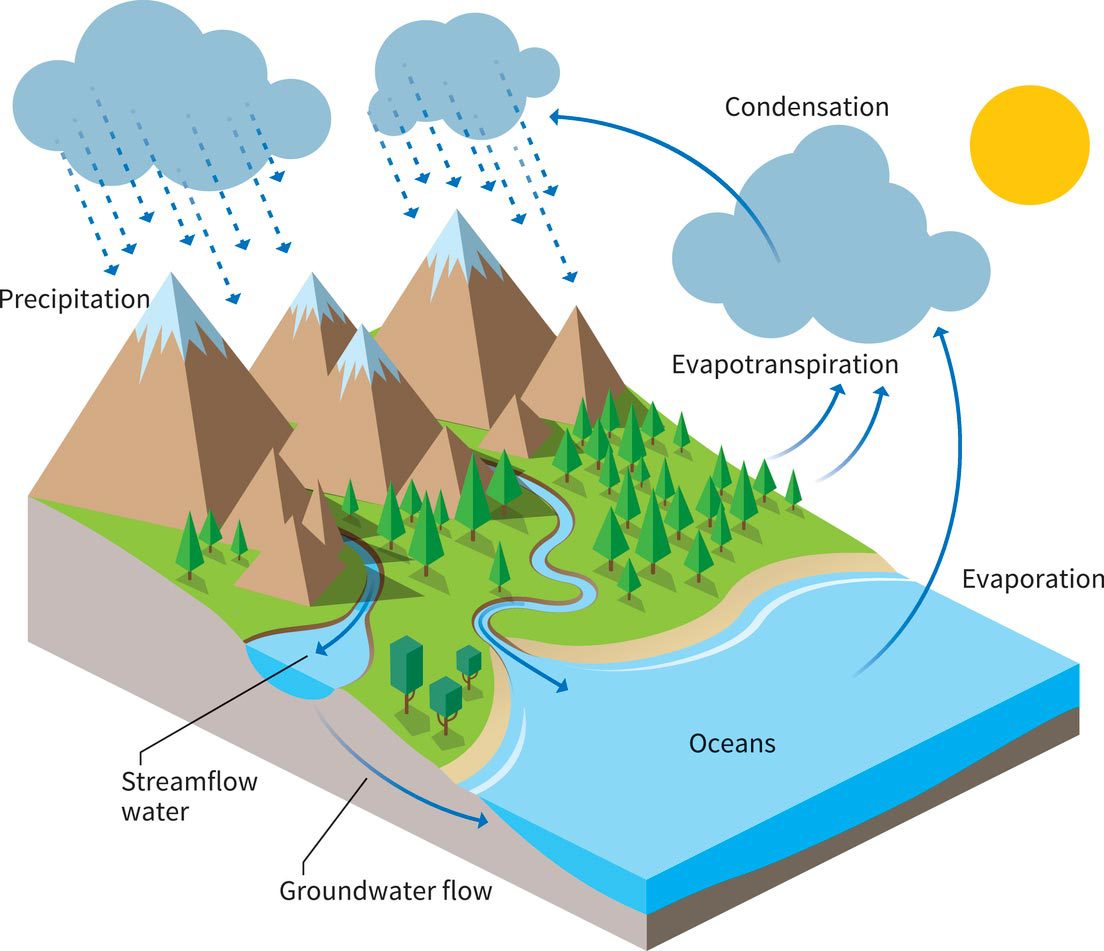
Water Cycle North Penn Water Authority
The water cycle is also known as the " hydrologic cycle ". Precipitation When too much water has condensed, the water droplets in the clouds become too big and heavy for the air to hold them. And so they fall back down to Earth as rain, snow, hail or sleet, a process known as " precipitation ". Collection

How to draw Water Cycle easy Water Cycle drawing step by step for beginners YouTube
The process in which water evaporates and falls on the land as rain and later flows back into the sea via rivers is called water cycle. (1) Water evaporates from hydrosphere (oceans, seas, river, lakes, ponds)with sun's heat and form clouds. (2) By the help of wind, clouds are blown over the land, where they are cooled enough to drop water as rain.
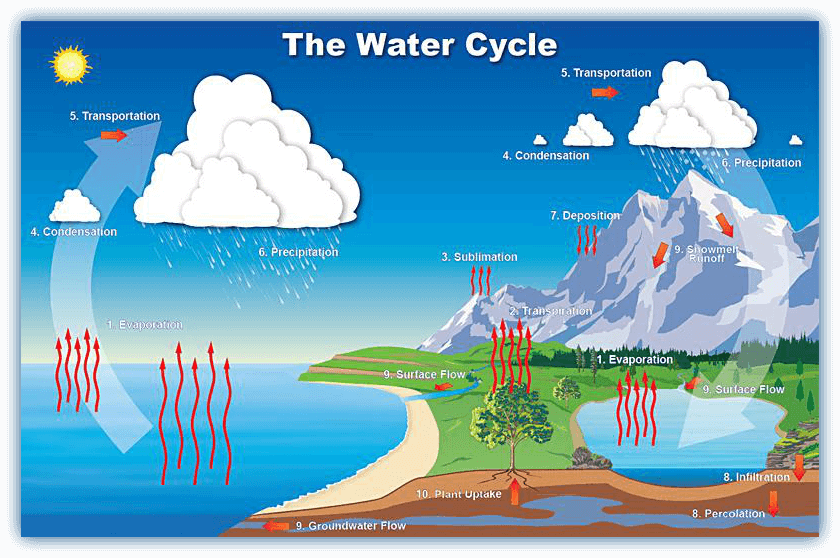
Water Cycle Miss Lagas
The water cycle is the natural process of continuous movement of water (evaporation, condensation, and precipitation) between the Earth's surface and the atmosphere. What is the Water Cycle? The water cycle is a continuous water circulation in the Earth-atmosphere system. The water cycle is also known as the Hydrologic or Hydrological Cycle.
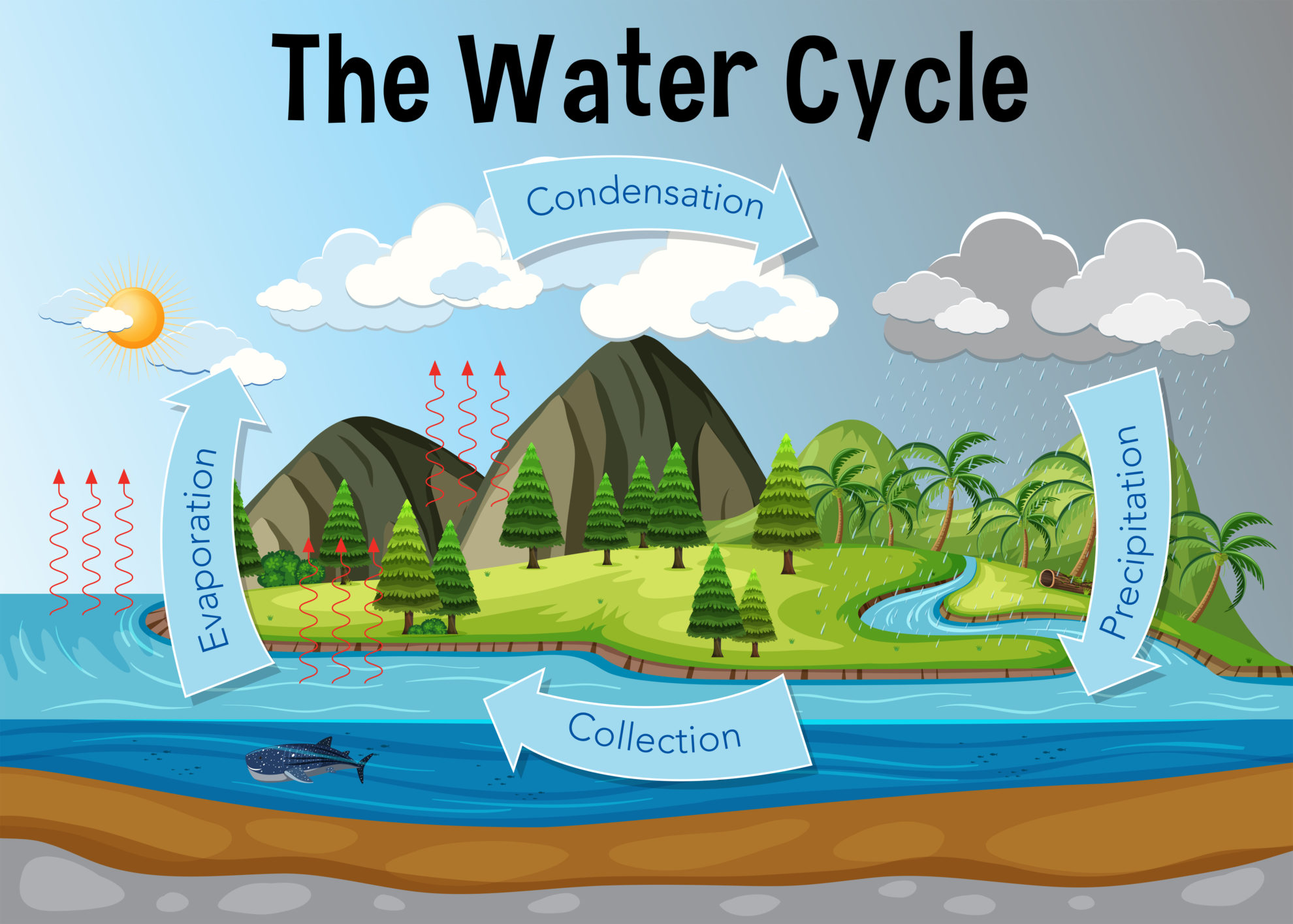
The Water Cycle Biology Online Tutorial
Water Cycle Diagrams. We have several diagrams of the water cycle to choose from including our newest diagram, released in 2022, depicting the global water cycle, as well as how human water use affects where water is stored, how it moves, and how clean it is.. The results can be used to get class discussions going..
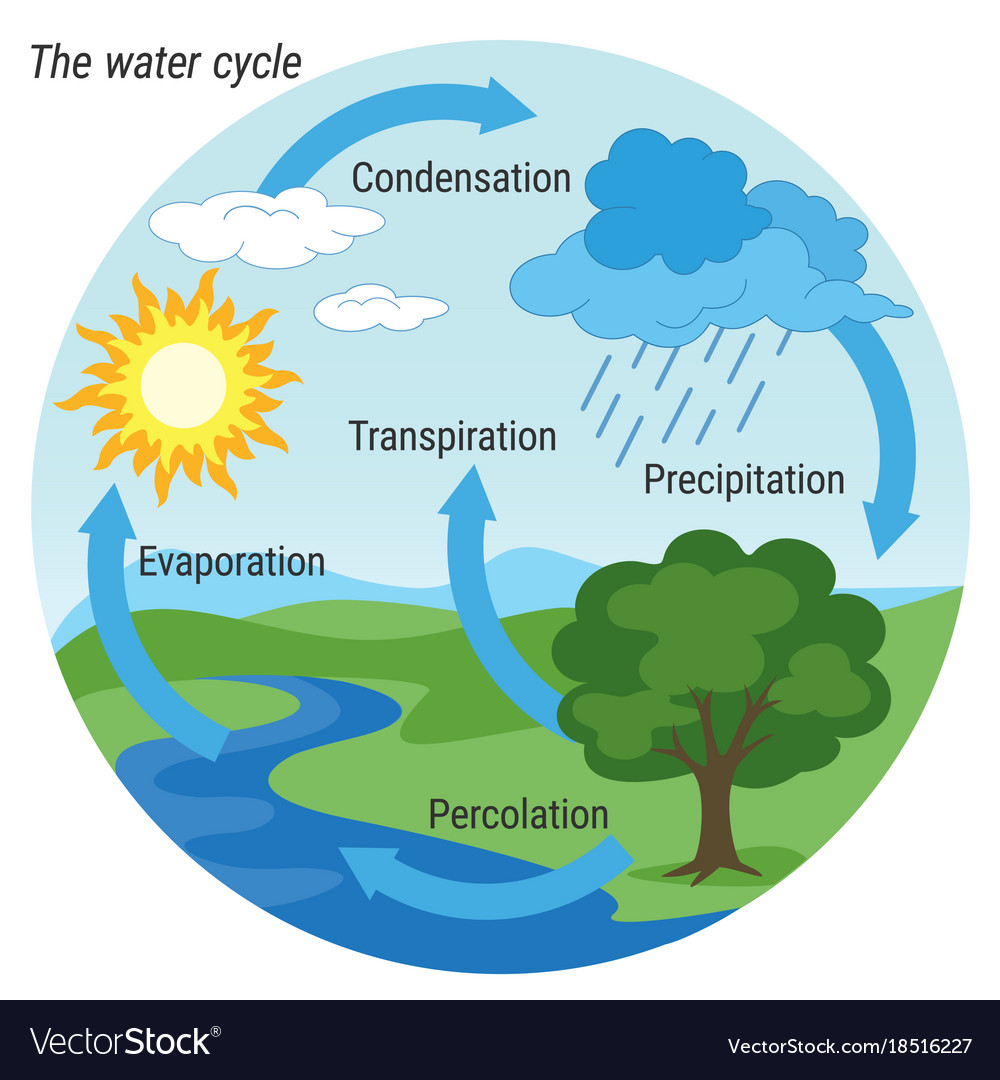
16+ Water Cycle Diagram With Explain PNG Diagrams
The water cycle, also known as the hydrologic cycle, is the continuous movement of water from the earth's surface to the atmosphere and then back to the ground. It is a continuous process. Hence, it does not have a starting or an ending point. Thus, the water present on earth has been in circulation since the evolution of the earth.

Environmental Science Water Cycle
And so that in general is the water cycle. You have evaporation, it condenses into clouds, it eventually precipitates, and it keeps going, round and round and round. Now of course, there's others actors at play. You have things like plants. Plants will take up water from the upper soil, as far as the plant's roots go.

Water Cycle Diagram And Explanation Design Talk
In this lesson, students will explore how water is continually cycled among land, the oceans, and the atmosphere. As students build a physical model of the water cycle, they will be able to simulate and observe evaporation, condensation, precipitation, and other water cycle processes in real-time. Remote learning: This lesson plan can be.
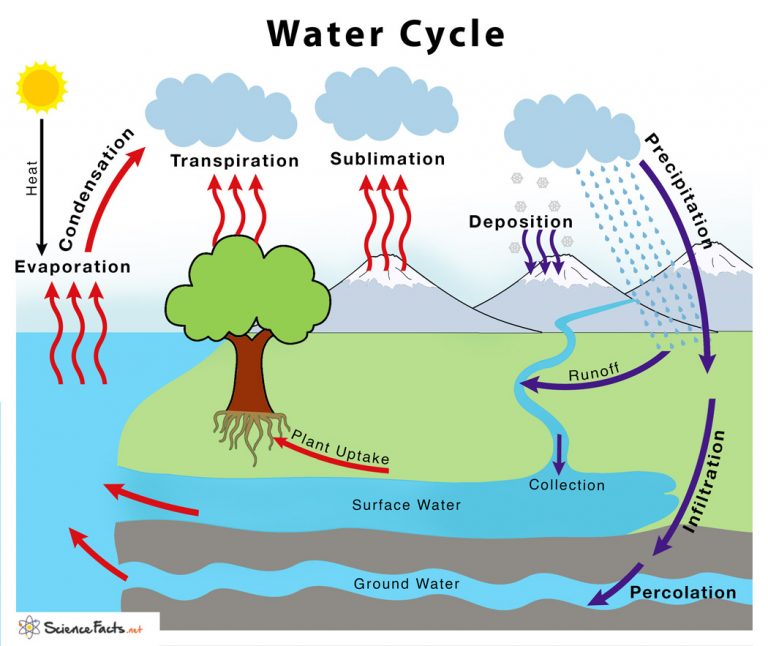
Water Cycle Definition & Steps Explained With Simple Diagram
The water cycle. The water cycle, or hydrologic cycle, is driven by the Sun's energy. The sun warms the ocean surface and other surface water, causing liquid water to evaporate and ice to sublime—turn directly from a solid to a gas. These sun-driven processes move water into the atmosphere in the form of water vapor.

Share it! Science "Choose Your Own" Water Cycle or Rock Cycle Story Template
The water cycle is critical to all animals and life on Earth. All animals need to take in water, use it, and get rid of the excess—animals have their own mini-water cycle going all the time. And some, like this parrot, have even learned to use a park drinking fountain when they need a drink. There is one creature on Earth that does have a.

Water Cycle Different Stages of the Water Cycle and Explanation
The water cycle, also known as the hydrologic cycle or the hydrological cycle, describes the continuous movement of water on, above and below the surface of the Earth. Water Cycle Diagram During this process, water changes its state from one phase to another, but the total number of water particles remains the same.

Diagram of Water Cycle 101 Diagrams
Diagram depicting the global water cycle. The water cycle, also known as the hydrologic cycle or the hydrological cycle, is a biogeochemical cycle that describes the continuous movement of water on, above and below the surface of the Earth.The mass of water on Earth remains fairly constant over time but the partitioning of the water into the major reservoirs of ice, fresh water, saline water.